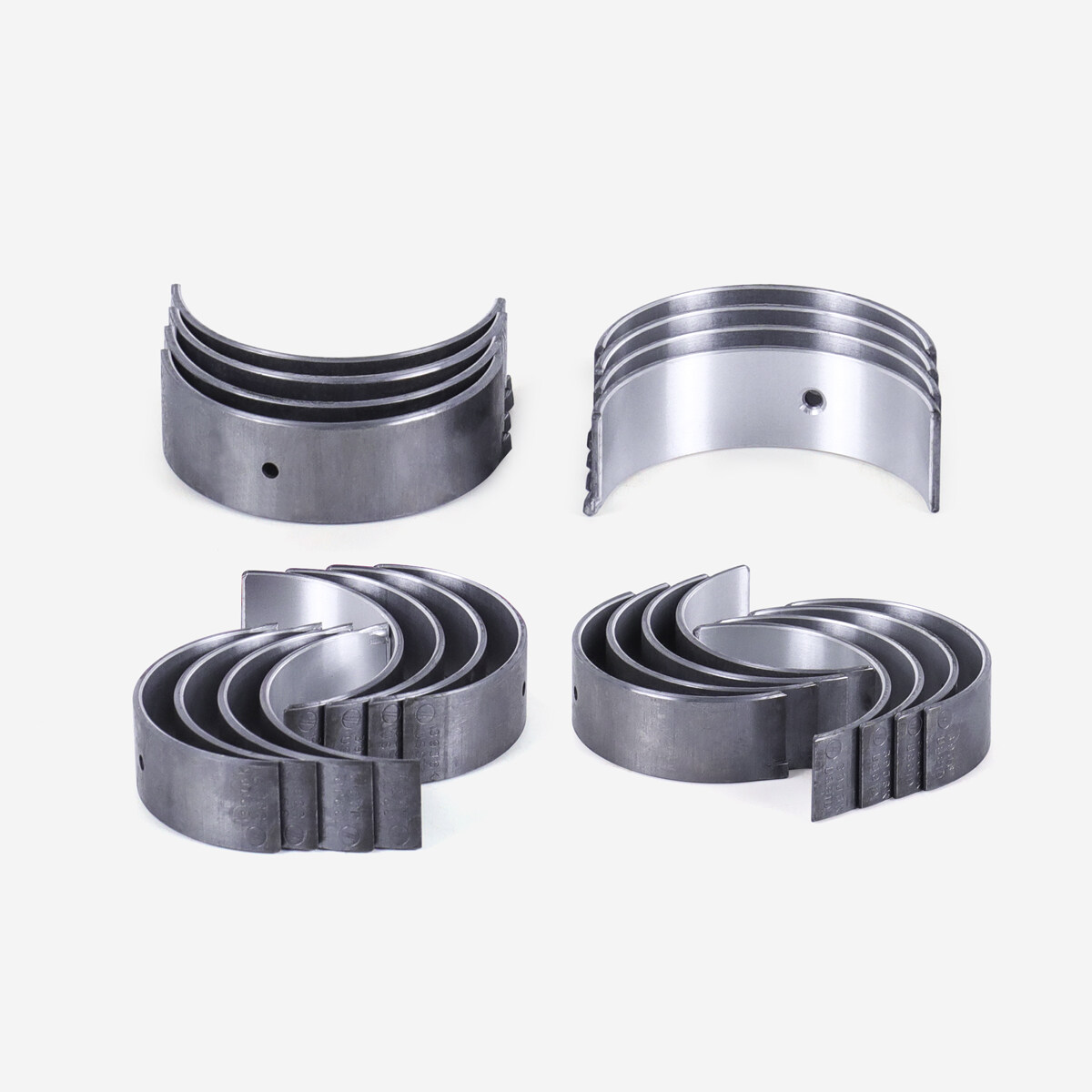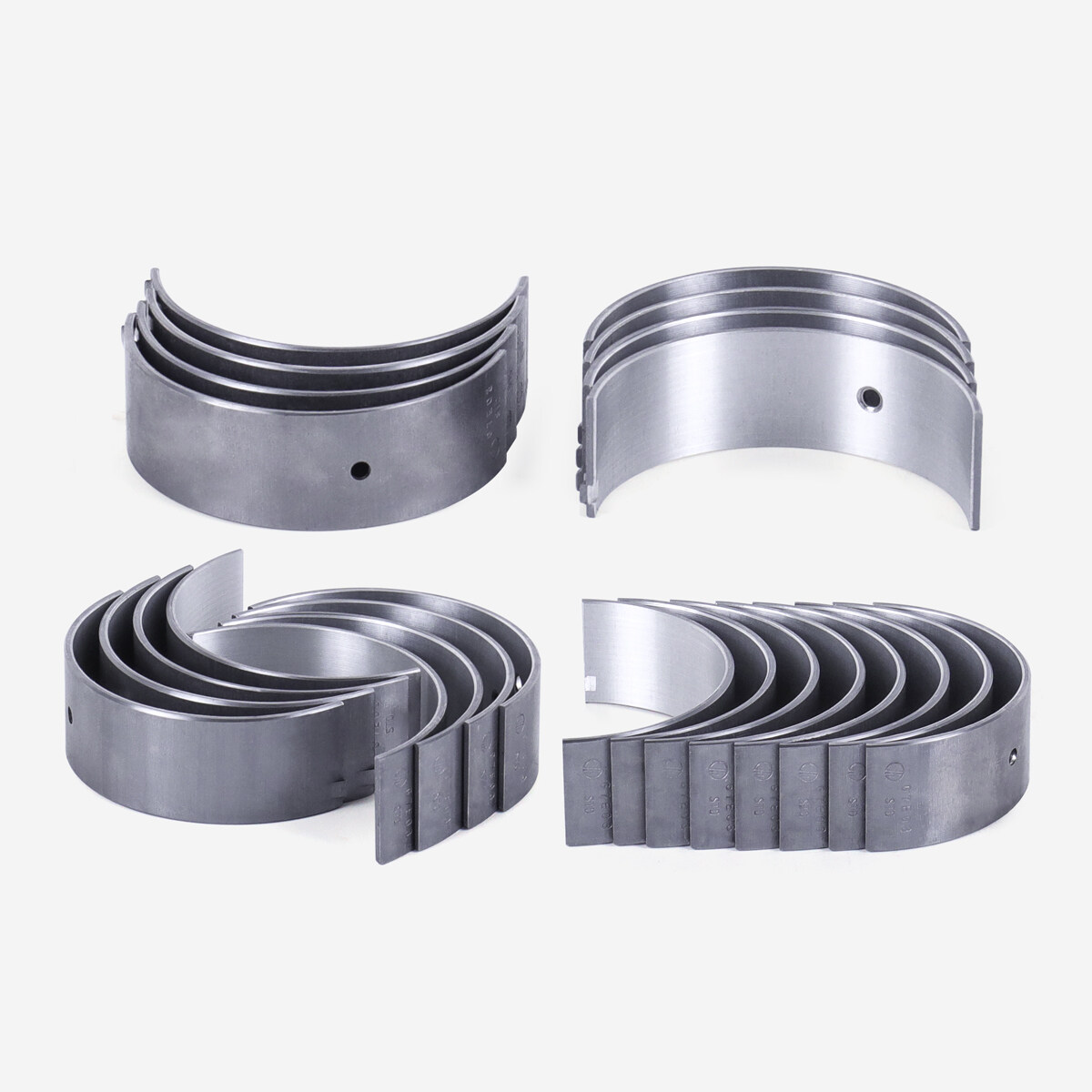

Con-rod bearings and main bearings are crucial components in an engine's internal workings. Over time, these bearings can wear out due to normal wear and tear, leading to performance issues and potential engine damage. Replacing these bearings is a delicate process that requires precision and attention to detail. In this guide, we will discuss how to correctly replace con-rod bearings and main bearings and highlight key considerations during the replacement process.
Introduction to Con-Rod Bearings and Main Bearings
Steps to Replace Con-Rod Bearings and Main Bearings
Prepare the Engine: Before beginning the replacement process, ensure the engine is cool and disconnected from any power source. Follow all safety protocols and use proper tools to avoid accidents.
Access the Bearings: To access the con-rod bearings and main bearings, disassemble the engine components carefully. Remove the oil pan, connecting rods, and crankshaft to reach the bearings.
Inspect the Bearings: Thoroughly inspect the condition of the old bearings. Look for signs of wear, scoring, or damage. Pay close attention to the bearing surfaces and ensure there are no contaminants present.
Remove the Old Bearings: Use appropriate tools to carefully remove the old con-rod bearings and main bearings. Take note of the orientation and placement of each bearing for correct installation later.
Clean the Components: Clean the engine block, connecting rods, and crankshaft surfaces meticulously to remove any debris or residue. Ensure all surfaces are smooth and free of any particles that could affect the new bearings.
Install the New Bearings: Carefully place the new con-rod bearings and main bearings in their respective positions. Follow manufacturer guidelines for proper fitting and orientation. Use lubricants recommended for bearing installation to aid in smooth operation.
Reassemble the Engine: Once the new bearings are in place, reassemble the engine components in the reverse order of disassembly. Torque all bolts to the specified values and double-check the alignment of the bearings.
Key Considerations When Replacing Bearings
Precision and Accuracy: Precision is crucial when replacing con-rod bearings and main bearings. Any misalignment or incorrect fitting can lead to engine damage and performance issues.
Quality of Bearings: Ensure you source high-quality bearings from reputable manufacturers. Cheap or substandard bearings can lead to premature wear and potentially catastrophic engine failure.
Proper Lubrication: Lubrication is key to the longevity and performance of bearings. Use recommended lubricants during installation and follow guidelines for maintenance to prevent excess friction.
Conclusion
Replacing con-rod bearings and main bearings is a critical maintenance task that should be done with care and attention to detail. By following the steps outlined in this guide and considering the key considerations, you can successfully replace these components and ensure the smooth operation of your engine. Regular maintenance and monitoring of bearings are essential to prolonging the life of your engine and preventing costly repairs.
Contact 1D Auto Parts,we also have piston, piston ring,spark plug, cylinder liner, valve and other products.
【1D Auto Parts】
Contact us to learn more
Whatsapp : +86 18144837660
Wed : www.1dauto.com www.1doem.com
Email cannot be empty
Password cannot be empty
Email format error
Email cannot be empty
Email already exists
6-20 characters(letters plus numbers only)
The password is inconsistent
Email format error
Email cannot be empty
Email does not exist
6-20 characters(letters plus numbers only)
The password is inconsistent